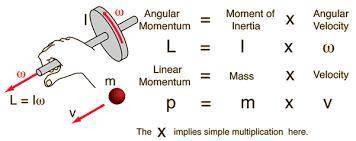
Physics, 12.08.2020 06:01 mairealexander87
14 A particle of mass m strikes a vertical rigid wall perpendicularly from the left with velocity v.
rigid wall
If the collision is perfectly elastic, the total change in momentum of the particle that occurs as a
result of the collision is
A. 2mv to the right.
B. 2my to the left.
C. my to the right.
D. my to the left.

Answers: 2
Another question on Physics


Physics, 22.06.2019 16:00
An charge with mass m and charge q is emitted from the origin, (x,y)=(0,0). a large, flat screen is located at x=l. there is a target on the screen at y position y(h), where y(h) > 0. in this problem, you will examine two different ways that the charge might hit the target. ignore gravity in this problem. 1.assume that the charge is emitted with velocity v(0) in the positive x direction. between the origin and the screen, the charge travels through a constant electric field pointing in the positive y direction. what should the magnitude e of the electric field be if the charge is to hit the target on the screen? express your answer in terms of m, q, y(h), v(0), and l. 2.now assume that the charge is emitted with velocity v(0) in the positive y direction. between the origin and the screen, the charge travels through a constant electric field pointing in the positive x direction. what should the magnitude e of the electric field be if the charge is to hit the target on the screen? express your answer in terms of m, q, y(h), v(0), and l.
Answers: 1

Physics, 22.06.2019 21:00
Which of the the following are examples of projectile motion of both projectile motion and two dimensional motion
Answers: 3

Physics, 22.06.2019 21:00
Aflask with vinegar in it has a mass of 160 grams. a balloon with baking soda in it has a mass of 40 grams. the balloon is attached to the flask to seal the opening and the vinegar and baking soda mixes. the balloon inflates to a large volume. what will the total mass of the balloon and flask be after the balloon inflates? explain. a) less than 200 grams because the solid baking soda disappears. b) 200 grams, because all the atoms remain in the balloon or flask. c) more than 200 grams because the size of the balloon is so much larger. d) less than 200 grams because gases such as the one in the balloon are lighter than solids and liquids.
Answers: 1
You know the right answer?
14 A particle of mass m strikes a vertical rigid wall perpendicularly from the left with velocity v....
Questions








Mathematics, 05.05.2020 19:21

Social Studies, 05.05.2020 19:21



Health, 05.05.2020 19:21


History, 05.05.2020 19:21





Mathematics, 05.05.2020 19:21

Mathematics, 05.05.2020 19:21




